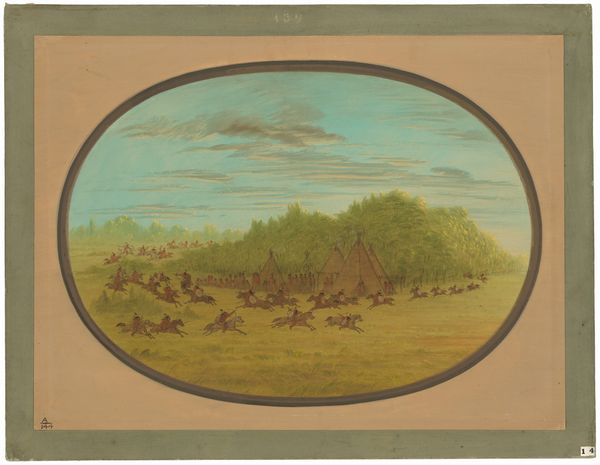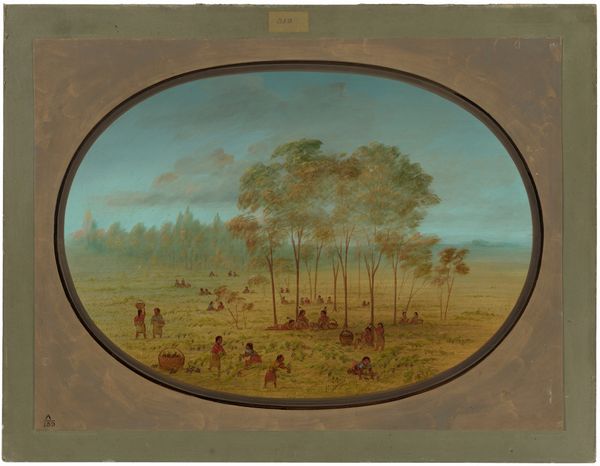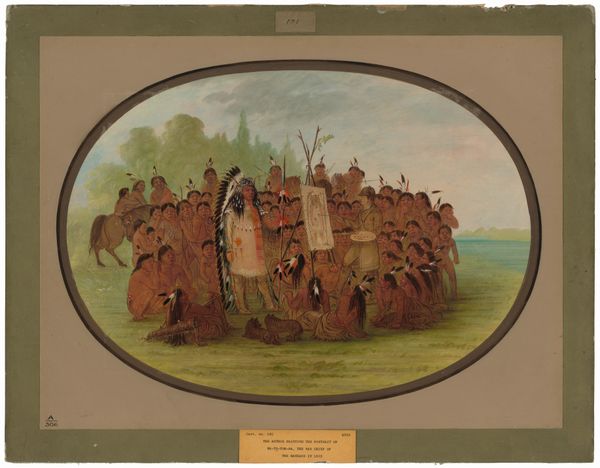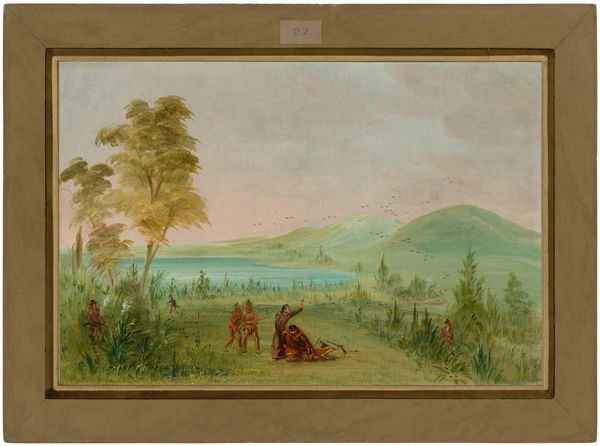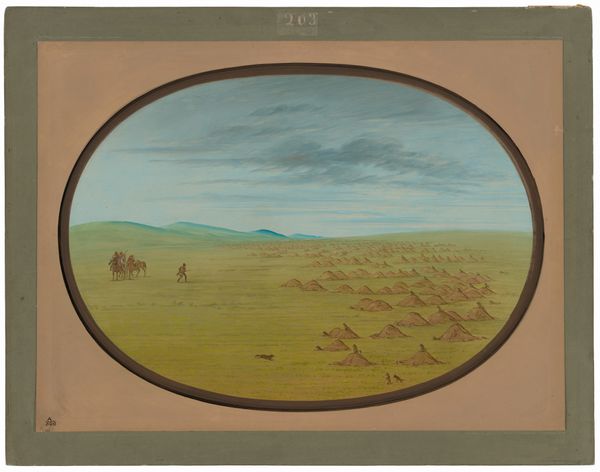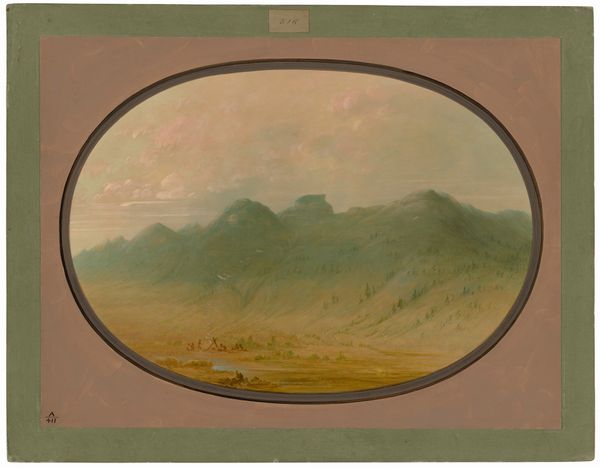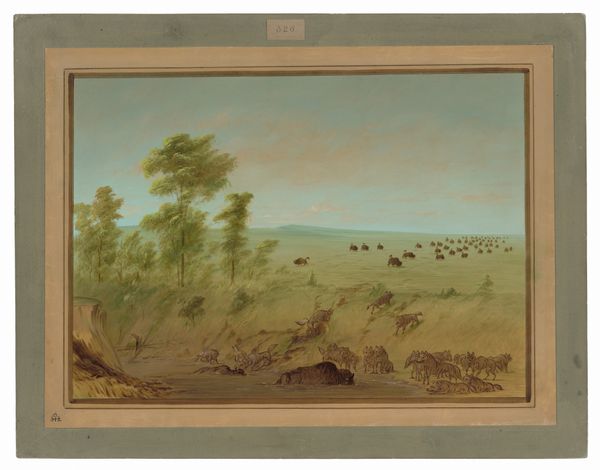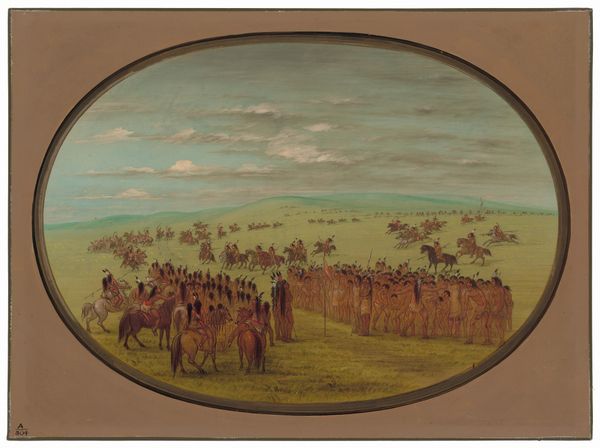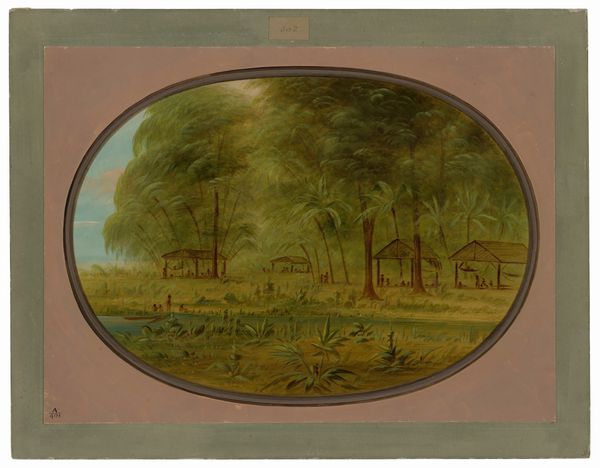
painting, gouache
#
water colours
#
narrative-art
#
painting
#
gouache
#
landscape
#
figuration
#
oil painting
#
watercolor
Dimensions: overall: 46.8 x 62.5 cm (18 7/16 x 24 5/8 in.)
Copyright: National Gallery of Art: CC0 1.0
Curator: Today we are looking at George Catlin's, "Crow Warriors Bathing," likely painted between 1861 and 1869. Editor: My initial impression is one of a peaceful afternoon scene. The soft light and tranquil water give it a sense of calm, a slow-motion kind of feeling. It seems far removed from typical depictions of the “Wild West.” Curator: Indeed, Catlin aimed to document Indigenous life, producing a vast visual record. But consider the socio-political context; these paintings were also exhibited, marketed to Eastern audiences eager for romanticized depictions of Native Americans. They became commodities in a specific cultural landscape. Editor: The physicality of the paint application intrigues me. Look closely; he has mixed watercolours to depict a large group of figures with such detail of human interaction on a fairly humble surface. We also see a layering of different processes used throughout to develop this landscape. Curator: The setting also reveals a lot, doesn't it? The composition positions the Crow warriors near the water's edge, with tipis in the background, signifying a connection to land and community—ideas being increasingly challenged by westward expansion. Editor: Absolutely. The depiction of work and leisure activities is really striking in this painting; in it there is evidence of gathering food with other more mundane rituals. The entire scene hints at a much broader picture, capturing daily practices. Curator: It's important to remember that Catlin was an outsider. His representation, even with the best intentions, is still filtered through his own perspective, reinforcing certain narratives for a predominantly white viewership. What does the display of Indigenous bodies in a state of leisure evoke in the audience? Editor: Yes. Even with the apparent attention to materials and production it’s crucial to always ask whose stories are not included or fairly represented within the artwork and the systems that supports and contextualizes it. Curator: Considering how Catlin navigated these historical forces gives me more insight into the cultural power that a simple-seeming genre painting can wield. Editor: I leave with a newfound awareness of the power behind seemingly gentle representations.
Comments
No comments
Be the first to comment and join the conversation on the ultimate creative platform.


